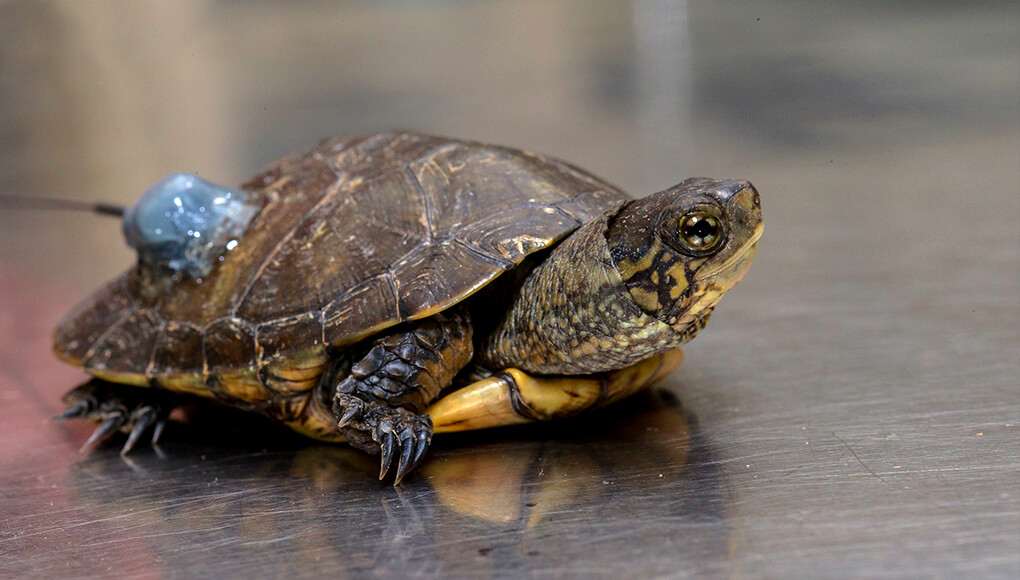
Protecting Pacific pond turtles
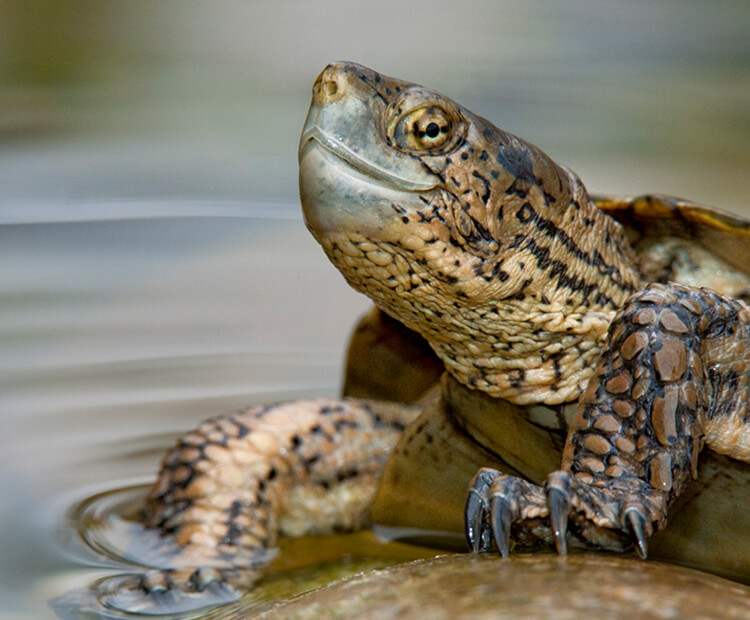
Streams and rivers
The Pacific pond turtle's habitat is slow-moving streams and large rivers along the western coast of the United States. But their numbers have been decreasing.
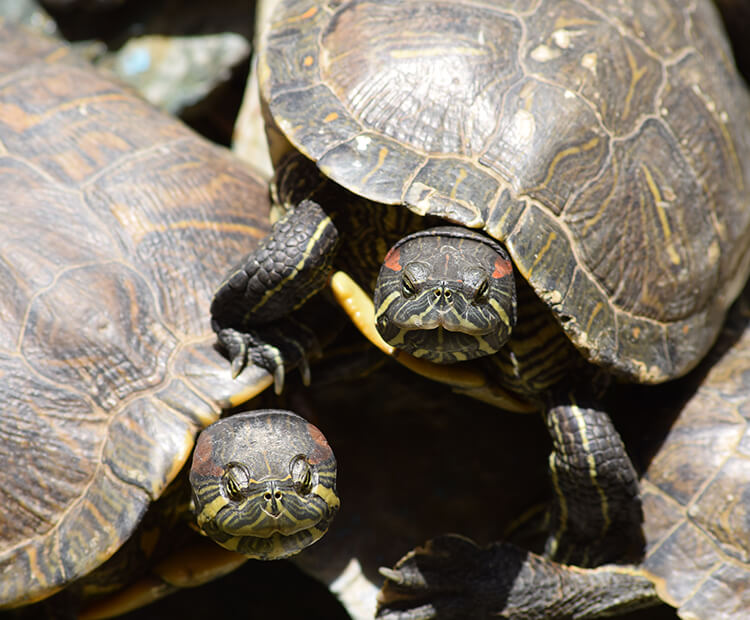
Habitat loss
They have lost habitat when rivers are dammed, and invasive species such as crayfish, trout, red-eared sliders and bullfrogs prey on them and eat the food they would normally eat. These invasive species have taken their toll, and native pond turtles have dwindled to only 120 in 5 locations in the San Diego region.
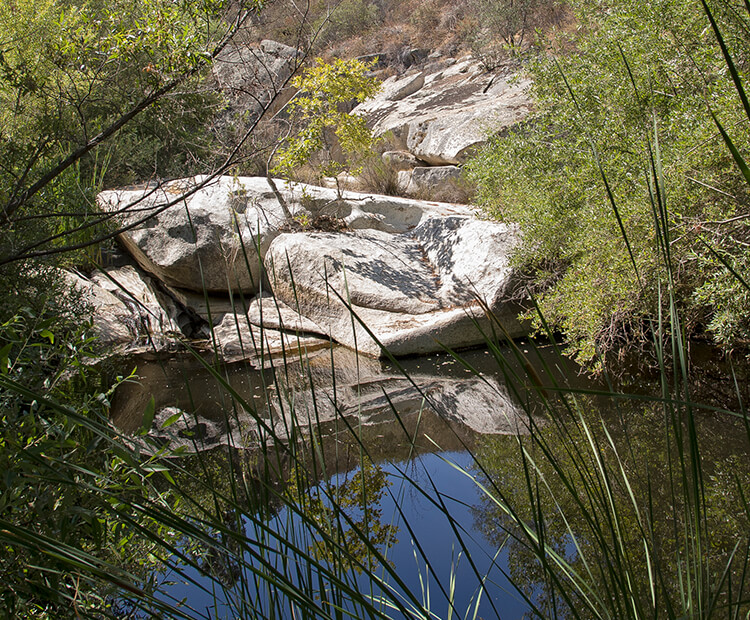
"Eggs"-tra careful
Biologists and wildlife care specialists for San Diego Zoo Wildlife Alliance have worked with government agencies to learn more about these turtles and give their population a boost. Pregnant female turtles were collected from local areas and brought to the San Diego Zoo. There, the moms-to-be laid their eggs in carefully prepared nesting chambers. After the eggs were laid, the adult female turtles were released back into their homes in the wild, and we took care of the eggs.
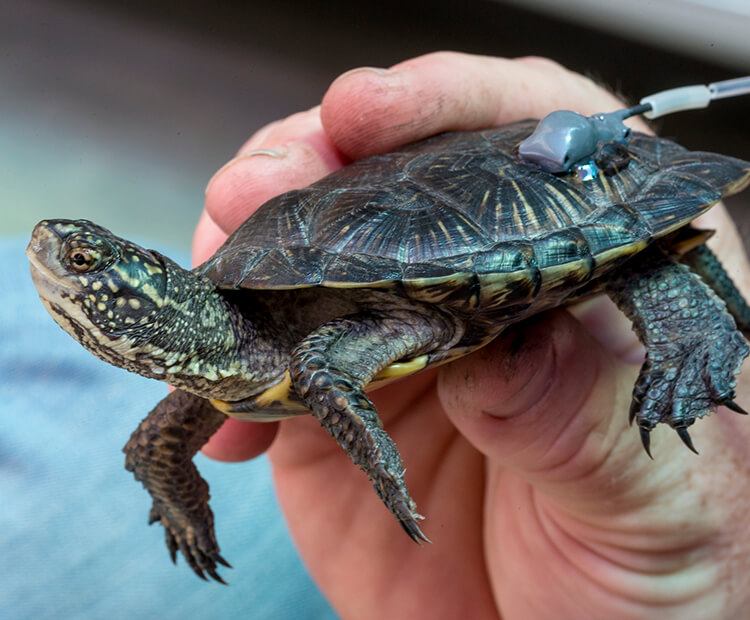
A safer size
When they hatched after a few months, we carefully reared the quarter-sized youngsters. In the wild, these hatchlings would be easy prey for hungry predators. We gave them a head start by raising them in a safe place. When they reached about the size of an English muffin and had a better chance of surviving, we got ready to send them home.
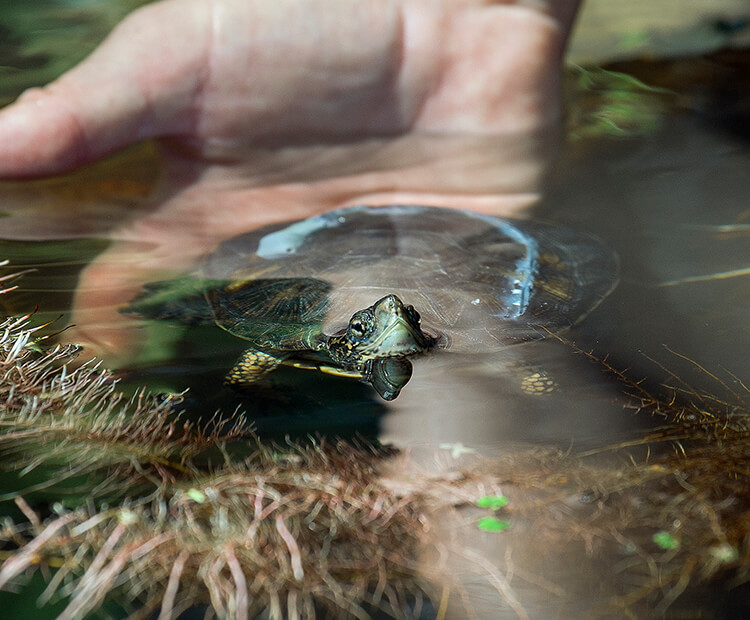
GPS feature
Each turtle was fitted with a teeny-tiny “radio pack” that held a GPS device with an antenna. The equipment was carefully attached to each turtle in a spot that would not interfere with the growth of the shell. The turtles were carried in a special container as the staff hiked to a spot that had everything a pond turtle could want: rocks and logs for sunbathing, plants to hide among, and plenty of food! Non-native predators like bullfrogs were removed from the area before we released the turtles.
The turtles are being tracked through their GPS packs. The information will help us better understand how these special reptiles use their habitat. That information will help people find ways to keep protecting Pacific pond turtles so they will paddle and hunt for a long time.




